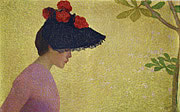
Clothing and Textiles
Clothing and Textiles

#03070364
The Mahant sees Elokeshi at the Tarakeshwar temple. The Mahant (the high priest...

#03070366
Bahadur Shah II (1775-1862) in Durban (the largest Asian community in South Afri...

#03080124
Rulebook from a monastery college showing the students' daily lives and training...

#03080131
Manesse Codex (sheet 13r): Margrave Otto IV of Brandenburg (1266-1309) carries t...

#03080134
Manesse Codex (sheet 219v): Wartburg was the seat of the Thuringian landgraves u...

#03080140
Facsimile of the Ellesmere Chaucer - The Merchant. The Ellesmere manuscript is...

#03080141
Facsimile of the Ellesmere Chaucer - The Cook. The Ellesmere manuscript is an e...

#03080142
Facsimile of the Ellesmere Chaucer - The Canon's Yeoman. The Ellesmere manuscri...

#03080143
Facsimile of the Ellesmere Chaucer - The Nun's Priest. The Ellesmere manuscript...

#03080163
The Jews' Passover. Facsimile of a miniature from a missel of 15th century orna...

#03080166
The capture of Jerusalem by Saladin on October 2, 1187 which caused the Third Cr...

#03080167
The defeat of Saladin and his troops by the Christian crusaders during the Third...